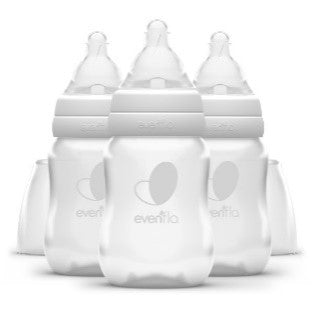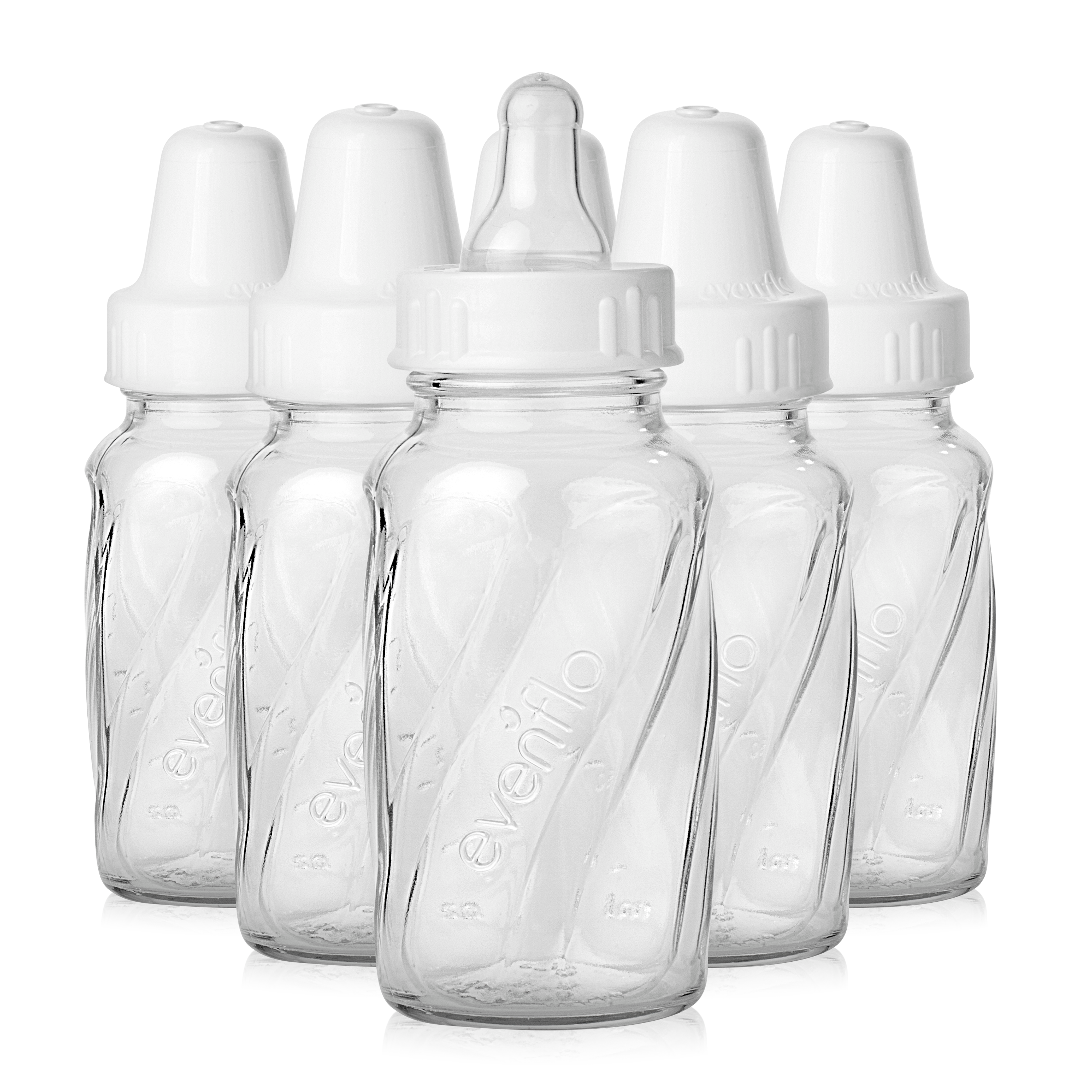
Bye Bye Bottle! How to make the transition from baby bottle to cup

Babies learn so much as they grow into toddlers. Just like crawling and walking, cup drinking is a skill that takes lots of practice and is learned over time. Many parents are surprised that learning to drink from a cup is so challenging for babies! Let’s look at why it’s so challenging, and ways you can help your baby learn this new skill.
Cup drinking requires different mouth movements than sucking. A baby sucks to drink from the breast, bottle, or a sippy cup with a stopper. When sucking, a vacuum is created in the mouth. This vacuum pulls a controlled amount of liquid onto the tongue where it is easily moved to the back of the mouth to swallow. When a baby drinks from an open cup or a cup without a stopper, the amount of liquid entering the mouth needs to be controlled. The liquid collects under the tongue, and then is gathered on top of the tongue and is moved back to swallow. These new skills take lots of practice to master. To help your baby learn to drink from an open cup or a sippy cup without a stopper:
- Offer sips of water at meal time. Using water in the cup eliminates sticky messes to wipe up later.
- Hold the cup hand-over-hand, where your baby holds the cup and your hand is placed over your baby’s hands. This allows you to control how much liquid your baby gets at one time.
- Let your baby practice unassisted during bath time and outside when the weather is warm. These are two times when learning to drink from a cup doesn’t create an extra mess.
- If your baby leans down to drink rather than lifting the cup, gently assist your baby by supporting under the elbows and lifting the arms slightly.
Your baby will still be breast and/or bottle-feeding while learning to drink from a cup. As your baby becomes proficient with a cup, the cup will naturally become the primary way of drinking during the daytime. Nighttime sucking—breast or bottle—is usually the last to go.








